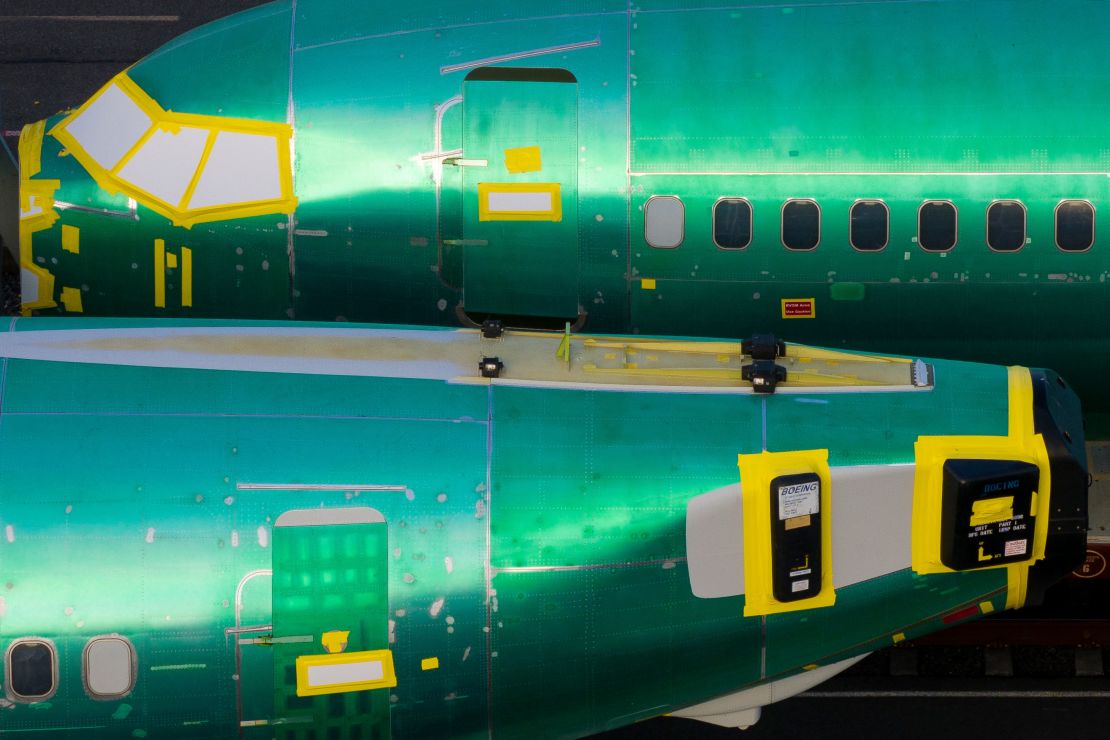Boeing’s problems the last six years have been legion. Tariffs could be yet another gut punch for the beleaguered company – and, given Boeing’s importance as the top US exporter, for the economy as a whole.
Boeing’s jets could get millions of dollars more expensive if other countries impose their own tariffs on US goods. And the US tariffs already in place could send the cost of building planes here soaring due the Boeing’s dependence on overseas suppliers.
That would come on top of safety and quality control failures that have led to fatal crashes and grounding of its jets, a strike that shut much of its production for two months late last year and plunging demand for planes during the Covid-19 pandemic.
The tariff battle is the last thing that Boeing needs right now, said Ron Epstein, an aerospace analyst with Bank of America.
Alarm bells are already ringing over a possible US recession. Tariffs on aircraft and airplane components could hurt production at all manner of aerospace factories as well as their suppliers. That could help push the economy over the edge.
“If you’re thinking about a manufacturing industry that is a net exporter, in a big way, why would you want to penalize it?” he said.
Boeing executives told investors Wednesday that they believe that the Trump administration will help ease their tariff worries.
“I don’t think a day goes by where we aren’t engaged with someone in the administration including cabinet secretaries and up to POTUS himself,” Ortberg told investors, using the acronym for President of the United States. “So this is a dynamic environment.”
Ortberg said Boeing’s discussions with the administration has indicated Trump understands “the importance of the aerospace industry to the US economy and the role that Boeing plays as a top US exporter.”
Despite its many problems, Boeing estimates that it supports 1.6 million jobs, directly and indirectly, including nearly 150,000 US employees of its own.
Perhaps the first sign of problems came over the weekend, when two planes at a Boeing facility in China were returned to the company’s Seattle facility rather than going to their Chinese customers. Boeing’s Chinese customers are facing a 125% tariff on any US imports, which was retaliation for the US tariff of 145% on most Chinese imports. Ortberg confirmed the return of two planes from China in comments to investors Wednesday and said a third plane is set to return due to the tariffs.
China problems are Boeing problems
The turned-around jets could be just the beginning of Boeing’s trade issues.

China is the largest and fastest growing market for commercial jets. Boeing’s own recent analysis estimated that Chinese airlines are expected to purchase 8,830 new planes over the next 20 years, which represents 10% to 15% of global demand, according to Richard Aboulafia, managing director at AeroDynamic Advisory. But the trade tensions between America and China have already caused Boeing to lose ground in China to its European rival Airbus.
Chinese customers ordered 122 Boeing planes in 2017 and 2018. In the six years since then, that slumped to orders for only 28 planes, mostly for freighters or from Chinese leasing companies, which could be buying them on behalf of airlines outside China. Boeing has not reported a single order for a passenger jet from a Chinese airline since 2019.
Wednesday Boeing reported a smaller-than-expected 49-cent-a-share core operating loss in first quarter. Ortberg cited several metrics that showed improvement in company operations in a note to employees, but he acknowledged that the trade issues could be a problem in its future results.
Boeing still has a massive backlog of orders from Chinese airlines – 195 planes, according to analysis from Epstein. It also has orders for 678 additional planes from unidentified airlines, most of which could also be from China, Epstein said.
The company can probably find alternative buyers even if its Chinese jet orders are canceled, given its multi-year global order backlog. Ortberg said it had planned to deliver about 50 planes to China this year, and that it should be able to find other buyers for those jets, assuming the Chinese tariffs on US exports there remain in place.
“There’s plenty of customers out there looking for the Max aircraft,” he said.
But if other countries tariff American aircraft as well, that could be a harder sell.
So far only China has slapped retaliatory tariffs on US goods, but other countries could follow. Boeing, a major exporter, could then become a bargaining chip in the global trade war, even though it would also hurt international airlines in need of planes, said Epstein.
“Boeing is an easy target,” he said. Tariffing Boeing “is an obvious thing to do.”
Soaring building costs
But selling and delivering planes is only part of the problem for Boeing. Building them might become an issue, too, as it depends on foreign-made parts for about 80% its planes’ content, according to Ortberg’s recent congressional testimony.
The wings on the 787 Dreamliner, Boeing’s most valuable and expensive plane, come from Japan, for example.
The door plug that blew out, mid-air, from a 737 Max in January 2024 came from a supplier in Malaysia – though the problems were caused not by the supplier but by Boeing, which did not replace four bolts needed to keep the door plug in place.
Finding new American suppliers could be especially hard: Each new US part and supplier would need to be recertified by the Federal Aviation Administration, a process that can take more than a year all by itself.
That leaves foreign parts – and tariffs to pay, raising the cost of building an already $50 million to $100 million aircraft by millions more.
Boeing hasn’t reported a full-year profit since 2018, running up a combined $51 billion in operating losses since then.
And suppliers are in even worse shape. Spirit AeroSystems, which Boeing is purchasing, has warned investors of “substantial doubt” about its ability to stay in business.
Ortberg told investors the company believes that whatever tariff costs are imposed on imported parts can be handled as part of its ongoing financial plans. That is partially because the company expects to get credits, known as “drawbacks,” on the cost of tariffs if a plane it builds is then exported. He said the net cost of the tariffs on imported part will end up being less than $500 million annually, which CFO Brian West described as “managable.”







